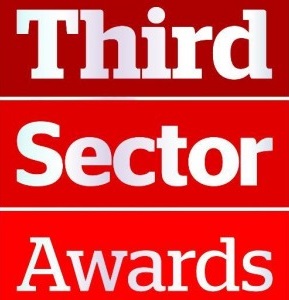Table of Contents
There is an increasing number of critical voices that point to the limitations of conventional aid. In this blog post, R&D team member Madiha Zeb Sadiq looks at some of these criticisms and whether alternatives to aid exist.
Fake “Aid”?
There is an abundance of criticisms of foreign aid. One key concern for many critics is effectiveness and sustainability.
Many poor countries are saddled with debt, and without sufficient development to justify it, the debt increases poverty, as the money spent on paying it off could have been invested in public infrastructure.
Dambisa Moyo, a vocal critic of foreign aid argues that “evidence overwhelmingly demonstrates that aid to Africa has made the poor poorer, and the growth slower.”
In fact, material donations often hinder economic progress as they destroy local businesses by eliminating the needs for material goods.
Another concern is that foreign aid is used as a tool of influence for donor countries over recipients and often does not address real needs on the ground.
The Independent Commission for Aid Impact (ICAI) suggests that “there is little indication that DfID has sought to address the forms of corruption that most directly affect the poor”, raising the question as to whether foreign aid is truly beneficial and being used for what is really needed.
Aid, the report goes on to argue, has little impact on improving political and human rights, because projects are funded to meet obligations and targets rather than to deliver results on the ground.
Examples are the Indian space programme or political projects producing graffiti in Kenya (which are often erased hours after completion) – do these really address the most urgent needs of the poor of those nations?
Moreover, in states that are afflicted by high levels of corruption particularly, aid money is often misused and instead lines the pockets of the elite.
Foreign aid can encourage corrupt governments by eliminating the responsibilities of the government to the people.
Knowing they will receive aid money, governments have little incentive to seek better methods of financing but corrupt governments are incentivised to remain in power.
What alternatives to aid exist?
“Trade not aid”
“Trade not aid” is an economic idea, which promotes free trade over foreign aid. The idea is that foreign aid perpetuates a culture of dependency and results in economic inefficiencies, by displacing incentives for domestic governments to invest in public infrastructure.
For example, governments often fail to set up efficient tax collection due to a reliance on foreign aid.
Advocates of the “trade not aid” approach argue that eliminating barriers to trade (such as tariffs, quotas, subsidies for local producers in developed countries and the high requirements for engaging in the global economy and in multilateral institutions, like the World Trade Organisation) may be more effective at increasing welfare than aid.
The success of South-East and East Asia is often cited. China’s economic growth over two decades lifted record numbers of people out of poverty.
Proponents of the “trade not aid” approach argue this was largely due to free trade.
However, critics contend that because countries differ from one another, it is unlikely that the South-East/East Asia model would be successful in, for example, South America.
Additionally, this approach would require significant market reform, and countries with underdeveloped industries may not benefit from such a drastic change.
Finally, although free trade enables self-sufficiency, the benefits are not always equally distributed, which also raises questions such as how those unable to work would benefit from this.
Social enterprises
Social enterprises are premised on prioritising social impact over profit. They do this by empowering locals through skills development and job creation.
That way, local innovation and creativity is promoted through participation, empowerment and support.
The assumption is that this encourages faster economic and sustainable growth. The social enterprises approach is believed to be particularly effective at addressing local issues, as it is locals who have the best understanding of issues that need addressing, making them the best candidates to resolve them.
Proponents of the social enterprise approach argue that social issues, the labour market and the environment are best targeted with this approach. However, critics argue that compared with well-designed targeted foreign aid projects, there is limited potential to solve major challenges, such as HIV prevention and treatment.
Foreign Direct Investment
The Foreign Direct Investment initiative has garnered support from the IMF and World Bank. It entails a long-term commitment for foreign companies to involve themselves with a locally established company’s day-to-day operations.
This could be by bringing in capital, skills, technical know-how or technology that will encourage growth of the locally created company.
This is expected to result in job creation and increased skills of local employees, linking to international value chains and international trade.
An example of this would be the telecom sector in Ghana, where foreign direct investments enabled greater job creation and improved overall infrastructure.
However, due to the control of foreign companies, issues of security and politics arise. This is particularly the case for countries with a history of colonialism, who fear FDIs may result in modern-day economic colonialism. Another issue would be the question of where the local company’s profits are directed. From the point of view of the investors, there are questions such as country risk, economic stability and risk of nationalisation.
Islamic Microfinance
A fourth alternative to aid is Islamic Microfinance. The shariah compliance of this economic model makes it a viable approach for many Muslim communities who may reject other forms of microfinance due to their religious beliefs.
Islamic microfinance takes the approach of “socially responsible investing” by premising itself on ethical principles and avoiding the use of riba, or interest.
One approach of Islamic microfinance is known as Qard al Hasan – this is a goodwill loan, where the borrower is only required to repay the exact amount that was borrowed.
Small loans can be given to communities in need, making it particularly effective at enabling the growth of entrepreneurs and providing financial stability.
The downsides of this approach are that it can only really help individuals who possess the skills to run a business – this is because the loan should be repaid. Additionally, the religious association might discourage some non-Muslims from pursuing Islamic microfinance as a solution.
These are just four of the many approaches that can be explored to encourage growth and development in different countries and contexts.
Evidence overwhelmingly shows that foreign aid is not only failing to effectively combat poverty and corruption but indeed encouraging them.
What may feel fulfilling and rewarding for donors is often only further damaging the recipients – it’s time to take a different path.
Written by Madiha Zeb Sadiq
Research and Development Assistant
Further Reading:







